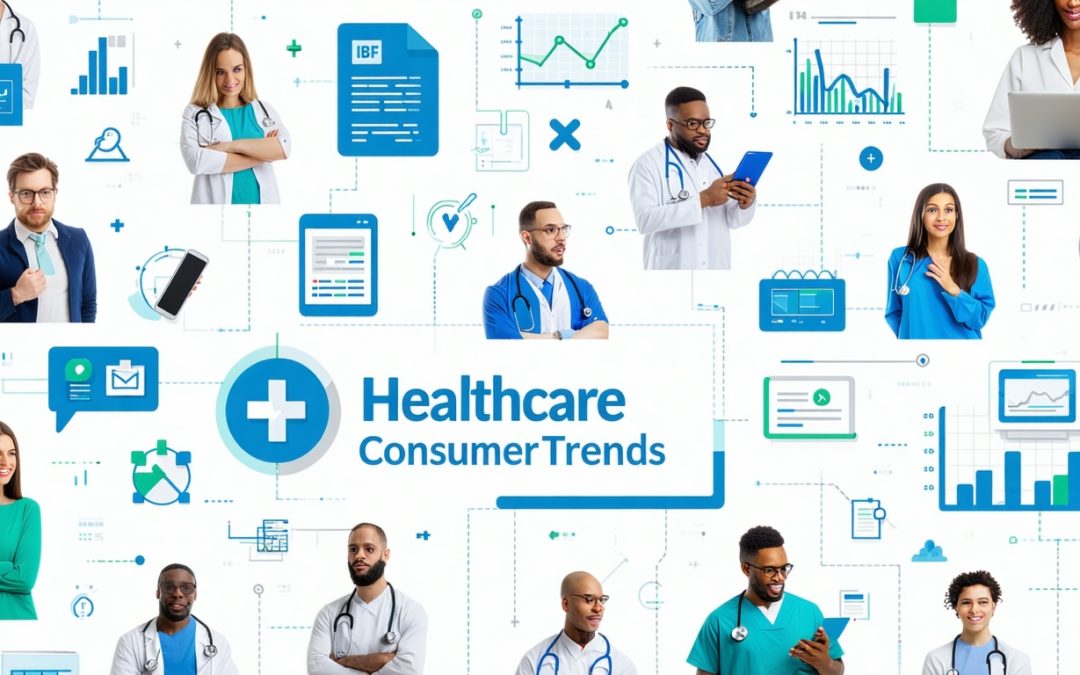The Evolution of Healthcare Delivery
The landscape of healthcare delivery has undergone significant changes over the years. Understanding these shifts is essential for young professionals considering private healthcare options.
Traditional Healthcare Models
Traditional healthcare models primarily focused on in-person visits to healthcare providers. Patients would schedule appointments, visit clinics or hospitals, and receive care based on a one-size-fits-all approach. This model often resulted in long wait times and limited access to specialists, particularly in rural areas.
The following table outlines some characteristics of traditional healthcare models:
| Characteristic | Description |
|---|---|
| Appointment-Based | Patients must schedule visits in advance. |
| In-Person Visits | Care is primarily delivered face-to-face. |
| Limited Access | Access to specialists can be challenging. |
| One-Size-Fits-All | Treatment plans are often standardized. |
Introduction to New Healthcare Delivery Trends
In recent years, new healthcare delivery trends have emerged, driven by technological advancements and changing patient expectations. These trends aim to enhance accessibility, personalization, and efficiency in healthcare services.
Some notable trends include:
-
Telemedicine: Virtual consultations allow patients to connect with healthcare providers from the comfort of their homes. This trend has gained popularity, especially during the COVID-19 pandemic, as it reduces the need for in-person visits.
-
Personalized Medicine: Tailoring treatment plans based on individual patient characteristics, such as genetics and lifestyle, is becoming more common. This approach aims to improve outcomes and patient satisfaction.
-
Artificial Intelligence: AI is being integrated into healthcare delivery to streamline processes, enhance diagnostics, and improve patient care.
-
Patient-Centered Care: A shift towards prioritizing patient needs and preferences is evident. This trend focuses on improving the overall patient experience and engagement in their own care.
For more insights into the evolving landscape, explore our articles on healthcare industry trends and emerging trends in healthcare industry.
These new trends are reshaping the way healthcare is delivered, making it more accessible and tailored to individual needs. Understanding these changes is crucial for young professionals navigating the private healthcare landscape.
Telemedicine and Virtual Care
Definition and Overview
Telemedicine refers to the use of technology to provide healthcare services remotely. This includes virtual consultations, remote monitoring, and digital communication between patients and healthcare providers. Telemedicine has gained significant traction in recent years, especially due to the increasing demand for accessible healthcare solutions. It allows patients to receive care from the comfort of their homes, making it a convenient option for many.
Virtual care encompasses a broader range of services, including telehealth, which may involve not only consultations but also health education and management of chronic conditions. This shift towards digital healthcare delivery is part of the larger trend of healthcare delivery trends that aim to improve patient access and outcomes.
Benefits and Limitations
Telemedicine offers numerous advantages, but it also comes with certain limitations. Below is a table summarizing the key benefits and limitations of telemedicine and virtual care.
| Benefits | Limitations |
|---|---|
| Increased accessibility to healthcare services, especially for those in remote areas | Limited physical examination capabilities |
| Convenience of receiving care from home | Potential technology barriers for some patients |
| Reduced travel time and costs | Not all conditions can be treated virtually |
| Improved management of chronic diseases through remote monitoring | Privacy and security concerns regarding patient data |
| Flexibility in scheduling appointments | Variability in insurance coverage for telehealth services |
Young professionals considering private healthcare may find telemedicine to be a valuable option. It aligns with the growing trend of digital health trends and offers a modern approach to healthcare delivery. However, it is essential to weigh the benefits against the limitations to determine if it meets individual healthcare needs. For more insights into the evolving landscape of healthcare, explore our articles on healthcare technology trends and emerging trends in healthcare industry.
Personalized Medicine
Understanding Personalized Healthcare
Personalized healthcare, also known as precision medicine, tailors medical treatment to the individual characteristics of each patient. This approach considers factors such as genetics, environment, and lifestyle to create customized treatment plans. By focusing on the unique aspects of each patient, healthcare providers can enhance the effectiveness of treatments and minimize adverse effects.
The rise of personalized medicine is driven by advancements in technology and a deeper understanding of human biology. Genetic testing and data analytics play a crucial role in identifying the most effective therapies for specific patient profiles. This trend is reshaping the healthcare landscape, making it essential for young professionals considering private healthcare to understand its implications.
| Key Components of Personalized Healthcare | Description |
|---|---|
| Genetic Testing | Analyzing DNA to identify predispositions to certain conditions. |
| Data Analytics | Using patient data to inform treatment decisions. |
| Tailored Treatment Plans | Customizing therapies based on individual patient profiles. |
Impact on Treatment Plans
The impact of personalized medicine on treatment plans is significant. By utilizing genetic information and other personal data, healthcare providers can develop more effective strategies for managing diseases. This approach not only improves patient outcomes but also enhances the overall efficiency of healthcare delivery.
For instance, in oncology, personalized medicine allows for the selection of targeted therapies that are more likely to be effective for specific cancer types. This reduces the trial-and-error approach often associated with traditional treatments, leading to faster recovery times and improved quality of life for patients.
| Treatment Plan Impact | Description |
|---|---|
| Increased Effectiveness | Higher success rates for treatments tailored to individual needs. |
| Reduced Side Effects | Minimizing adverse reactions by selecting appropriate therapies. |
| Enhanced Patient Engagement | Patients are more involved in their care decisions, leading to better adherence to treatment. |
As personalized healthcare continues to evolve, it is essential for young professionals to stay informed about personalized healthcare trends and how they may influence their healthcare choices. Understanding these trends can empower individuals to make informed decisions about their health and wellness.
Artificial Intelligence in Healthcare
Artificial Intelligence (AI) is transforming the landscape of healthcare delivery. By leveraging advanced algorithms and data analysis, AI enhances various aspects of patient care and operational efficiency.
Role of AI in Healthcare Delivery
AI plays a significant role in streamlining healthcare processes. It assists healthcare providers in diagnosing conditions, predicting patient outcomes, and personalizing treatment plans. The integration of AI into healthcare systems allows for more accurate data analysis, leading to improved decision-making.
Key functions of AI in healthcare include:
- Data Management: AI systems can process vast amounts of patient data quickly, identifying patterns that may not be visible to human providers.
- Diagnostic Assistance: AI algorithms can analyze medical images and lab results, aiding in the early detection of diseases.
- Predictive Analytics: AI can forecast patient needs and potential health risks, allowing for proactive care.
Applications and Advantages
The applications of AI in healthcare are diverse, offering numerous advantages that enhance patient care and operational efficiency. Below is a summary of some key applications and their benefits.
| Application | Description | Advantages |
|---|---|---|
| Diagnostic Tools | AI algorithms analyze medical images (e.g., X-rays, MRIs) for abnormalities. | Increased accuracy in diagnosis, reduced time for analysis. |
| Virtual Health Assistants | AI-powered chatbots provide patients with information and support. | 24/7 availability, improved patient engagement. |
| Predictive Analytics | AI analyzes patient data to predict health outcomes. | Early intervention, reduced hospital readmissions. |
| Personalized Treatment Plans | AI customizes treatment based on individual patient data. | Enhanced effectiveness of treatments, improved patient satisfaction. |
The integration of AI into healthcare delivery is part of broader healthcare technology trends that aim to improve patient outcomes and streamline operations. As young professionals consider private healthcare options, understanding these advancements can help them make informed decisions about their care. For more insights into the evolving landscape, explore our articles on emerging trends in healthcare industry and healthcare analytics trends.
Patient-Centered Care
The concept of patient-centered care is gaining traction in the healthcare industry. This approach emphasizes the importance of focusing on the individual needs and preferences of patients, rather than solely on the medical conditions they present.
Shifting Focus to Patients
In traditional healthcare models, the emphasis often lay on the healthcare provider’s expertise and the treatment protocols. However, the shift towards patient-centered care recognizes that patients are active participants in their own health journeys. This trend encourages healthcare providers to engage with patients, listen to their concerns, and involve them in decision-making processes regarding their treatment options.
| Key Elements of Patient-Centered Care | Description |
|---|---|
| Communication | Open dialogue between patients and providers to discuss health concerns. |
| Involvement | Encouraging patients to take an active role in their healthcare decisions. |
| Respect | Acknowledging and valuing patients’ preferences and values. |
| Support | Providing emotional and psychological support throughout the treatment process. |
Enhancing Patient Experience
Enhancing the patient experience is a critical component of patient-centered care. By prioritizing the needs and comfort of patients, healthcare providers can improve satisfaction and outcomes. This can be achieved through various strategies, such as:
- Personalized Care Plans: Tailoring treatment plans to fit individual patient needs and preferences.
- Feedback Mechanisms: Implementing systems for patients to provide feedback on their experiences, which can inform improvements in care delivery.
- Accessibility: Ensuring that healthcare services are easily accessible, including telehealth options for those who may have difficulty visiting facilities.
| Strategies for Enhancing Patient Experience | Benefits |
|---|---|
| Personalized Care Plans | Increases patient satisfaction and adherence to treatment. |
| Feedback Mechanisms | Helps identify areas for improvement in service delivery. |
| Accessibility | Reduces barriers to care, improving overall health outcomes. |
The focus on patient-centered care aligns with broader healthcare delivery trends that aim to create a more responsive and effective healthcare system. By embracing this approach, healthcare providers can foster stronger relationships with patients, ultimately leading to better health outcomes and a more positive healthcare experience. For more insights into the evolving landscape of healthcare, explore our articles on healthcare industry trends and emerging trends in healthcare industry.
Integrative Health Models
Integrative health models are gaining traction in the healthcare landscape, emphasizing a holistic approach to patient care. This model combines various treatment modalities to address the physical, emotional, and spiritual needs of individuals.
Holistic Approach to Healthcare
The holistic approach in healthcare focuses on treating the whole person rather than just the symptoms of a disease. This perspective recognizes that various factors, including lifestyle, environment, and mental health, play a significant role in overall well-being.
Key components of a holistic approach include:
| Component | Description |
|---|---|
| Physical Health | Emphasizes the importance of regular exercise, nutrition, and preventive care. |
| Emotional Health | Addresses mental well-being and stress management techniques. |
| Spiritual Health | Encourages practices that foster a sense of purpose and connection. |
| Social Health | Recognizes the impact of relationships and community on health. |
By integrating these elements, healthcare providers can create more comprehensive treatment plans that cater to the unique needs of each patient.
Combining Traditional and Alternative Medicine
Integrative health models often blend traditional medicine with alternative therapies. This combination allows for a more personalized approach to treatment, enhancing patient outcomes and satisfaction.
Common alternative therapies that may be included in integrative health models are:
| Therapy Type | Description |
|---|---|
| Acupuncture | A practice that involves inserting thin needles into specific points on the body to relieve pain and promote healing. |
| Herbal Medicine | The use of plants and plant extracts for therapeutic purposes. |
| Chiropractic Care | Focuses on diagnosing and treating musculoskeletal disorders, primarily through manual adjustment of the spine. |
| Mind-Body Techniques | Practices such as yoga, meditation, and mindfulness that promote mental and emotional well-being. |
The integration of these therapies with conventional medical practices can lead to improved health outcomes. For instance, patients may experience reduced pain, enhanced recovery times, and better management of chronic conditions.
As young professionals consider private healthcare options, understanding these healthcare delivery trends can help them make informed decisions about their health and wellness.












0 Comments